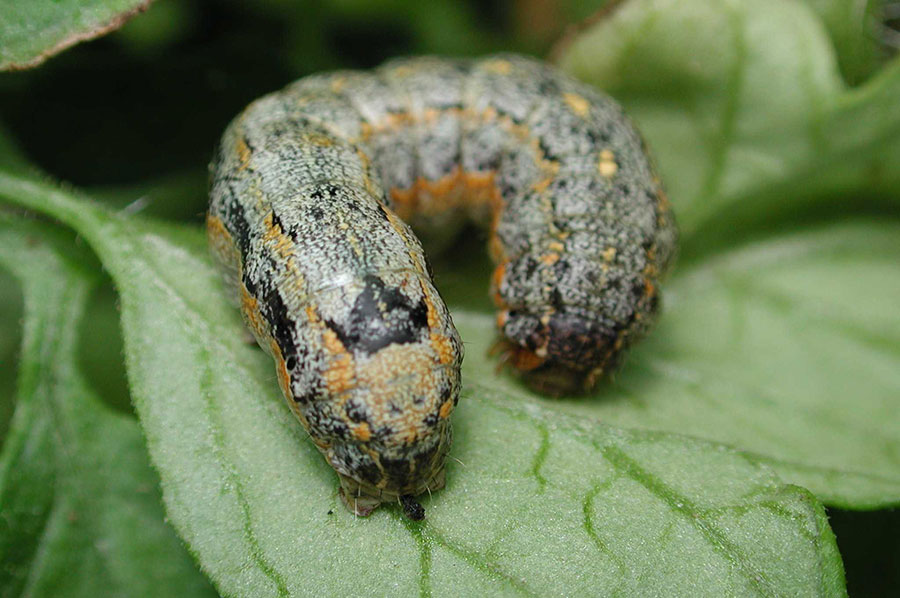Varigated Cutworm
Peridroma saucia

Late instar variegated cutworm larva.
This climbing cutworm larva has four or five yellowish white, somewhat diamond-shaped spots (one per segment) on the top of the back that get progressively smaller toward the rear. Producers should look for this pest at the same time they are checking for growth on secondary buds while scouting fields to time the first cutting. If high populations of mature variegated cutworm are discovered before cutting, it may be advisable to delay cutting a few days so that the majority of the larvae pupate.
Foliage feeding in a dense canopy of an established stand will be less detrimental than repeated removal of young regrowth after cutting. More than 70% of food consumption occurs in the last larval stage before pupation. Larvae often concentrate beneath the windrows, so relatively sparse field-wide populations can cause severe damage to the area beneath the windrow if harvest is delayed. Control is recommended when more than two worms per square foot are present after the hay has been cut – provided that most are not expected to pupate in the next three to four days. Windrows must be baled and bales removed before the field is sprayed.
Please refer to the most recent version of the Alfalfa Insect Management Guide for specific control alternatives.
Page last updated 4/17/2024 by J.P. Michaud.